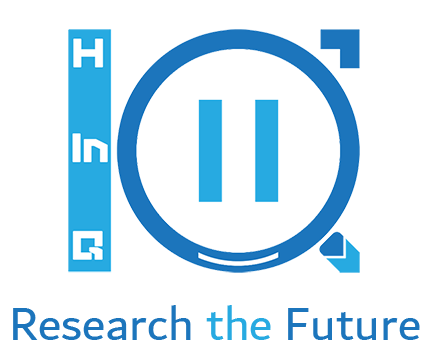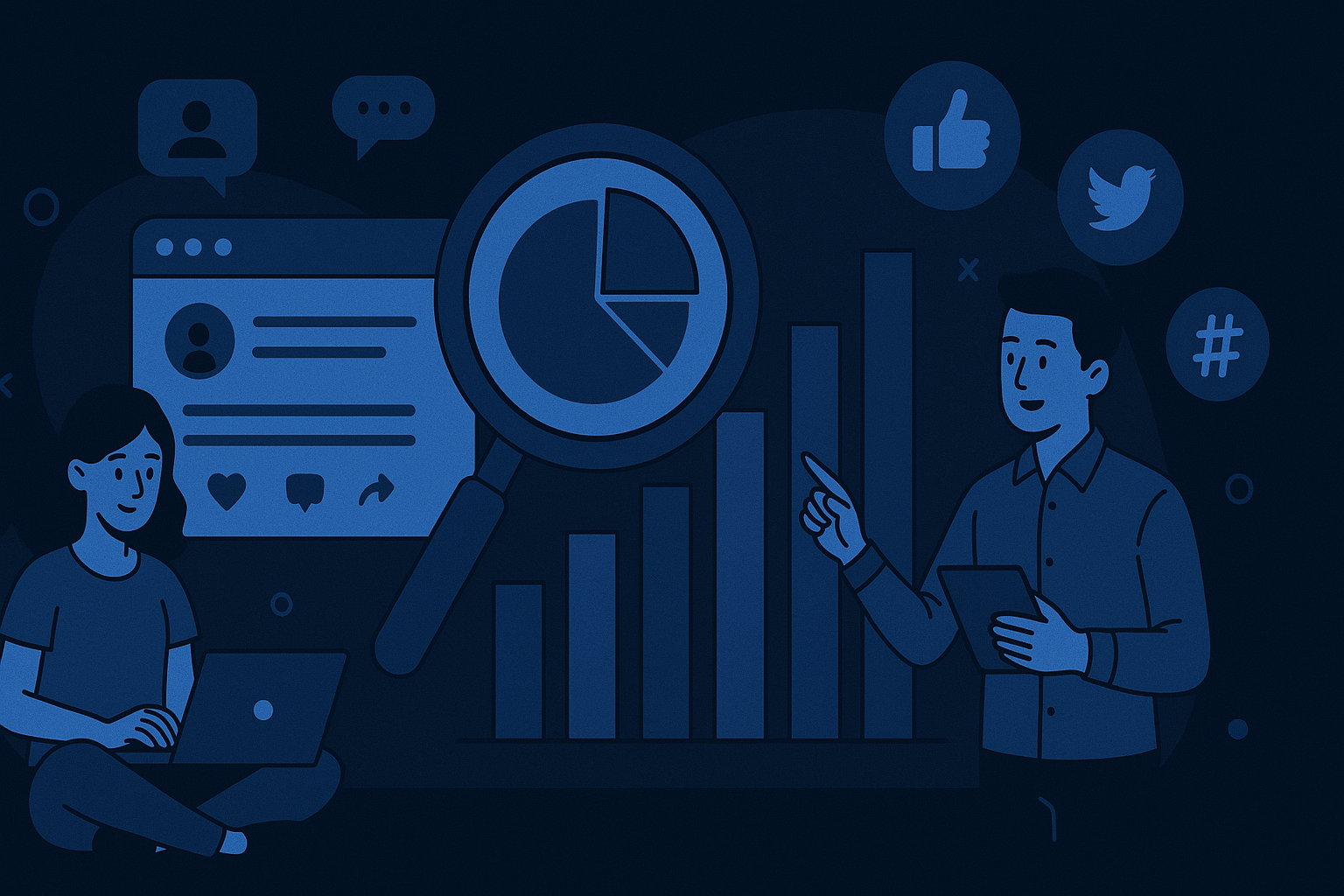Market Research is Stuck in the Past: Social Media is the Future
Traditional market research is too slow, too expensive, and often out of touch with reality. Surveys take weeks to compile, focus groups reflect only a fraction of real consumer sentiment, and market reports often analyze trends that have already changed. Meanwhile, social media is a constant stream of real-time opinions, discussions, and behaviors that brands can tap into instantly. Businesses that still rely on outdated research methods are missing a goldmine of consumer insights happening right in front of them.
Every second, millions of people are discussing products, trends, frustrations, and desires across platforms like Twitter, Instagram, LinkedIn, and Reddit. They aren’t waiting to be surveyed or interviewed—they’re sharing their thoughts openly, in real time, without the filter of a formal research setting. The brands that understand this shift are the ones that move faster, adjust strategies on the fly, and create marketing campaigns that truly resonate. Meanwhile, those stuck in old research models are left reacting to yesterday’s trends while their competitors shape tomorrow’s.
Social media isn’t just for advertising—it’s an active, evolving research tool that provides faster, deeper, and more honest insights than any traditional method. The brands that leverage it properly aren’t just keeping up with consumers—they’re anticipating their next move.
Stop Watching, Start Listening: How Social Media Exposes What Consumers Really Think
Most brands use social media as a broadcasting tool—posting ads, promoting content, and pushing their latest campaigns. But the real power of social media isn’t in speaking—it’s in listening. Consumers aren’t waiting for surveys or market reports to share their thoughts. They are already talking, expressing opinions, frustrations, and preferences in real-time, without filters.
Unlike traditional research, where responses are often influenced by survey bias, scripted questions, or controlled environments, social media provides raw, unfiltered insights. People complain about bad products, rave about great ones, and openly discuss what they wish brands would do better. Instead of asking customers what they think, businesses can simply observe what they’re already saying.
A single viral tweet can reveal shifting attitudes toward an industry. A trending hashtag can highlight emerging consumer expectations. A heated Reddit discussion can expose pain points that no survey would have uncovered. Yet, many brands still fail to recognize the value of these conversations, focusing only on engagement metrics rather than deeper insights.
Smart businesses don’t just watch—they listen. They track sentiment, analyze discussions, and extract valuable intelligence from everyday conversations. Social media isn’t just a marketing tool; it’s the most honest focus group in the world—available 24/7. The brands that master social listening gain a huge competitive advantage over those still waiting for customers to fill out a survey.
Your Competitors Are Talking—Are You Paying Attention?
Most brands think of social media as a way to engage with customers, but they overlook one of its most valuable uses—competitive intelligence. Every day, competitors are revealing their strategies, customer interactions, and weaknesses online. The question is: Are you paying attention?
Businesses often spend millions on market research to understand what their competitors are doing, yet social media provides this information for free, in real-time. Product launches, pricing changes, customer complaints, marketing failures—all of it is happening publicly, right on platforms like Twitter, LinkedIn, and industry forums. The brands that track these insights don’t just keep up with the competition—they get ahead.
A competitor’s negative customer reviews can reveal gaps in their service that your brand can exploit. Their most successful campaigns can teach you what resonates with your shared audience. A sudden spike in engagement around a competitor’s new feature might indicate an industry shift you need to act on immediately. Social media is the only place where businesses can observe competitor wins and losses in real-time, without waiting for annual reports or outdated benchmarking studies.
Yet, too many brands fail to take advantage of this intelligence. They focus on creating content rather than gathering insights. They look at their own engagement numbers while ignoring the bigger industry conversation happening all around them. The smartest businesses understand that social media is a two-way street—not just a platform to be seen, but a tool to see what others are doing.
Brands that treat social media as a competitive research lab, not just a marketing channel, will always be ahead of those who only use it to push their own message. In e-commerce, tech, fashion, or any industry that moves fast, the ability to predict market shifts and consumer trends before they go mainstream is what separates the leaders from the followers.
From Noise to Knowledge: Turning Social Media Data into Actionable Insights
Social media is a constant flood of conversations, but most brands fail to turn that noise into meaningful insights. They track likes, shares, and comments but don’t go deeper to understand what consumers are actually saying and feeling. Data without action is useless, and brands that don’t know how to extract real value from social media are wasting a massive opportunity.
The key to making social media research effective is moving beyond surface-level engagement metrics and focusing on patterns, sentiment, and behavioral shifts. A spike in brand mentions might look great on a report, but is it positive attention or negative backlash? A trending product feature might indicate a market shift that demands immediate action. A high-performing competitor campaign might reveal messaging that’s resonating with customers in ways your brand hasn’t explored.
To unlock the full potential of social media data, businesses need more than just monitoring—they need analysis. This means using AI-powered sentiment tracking, keyword analysis, and audience segmentation to break down what customers are really saying. It’s about understanding not just the words, but the emotions behind them. Social listening tools can detect rising concerns before they turn into PR disasters, spot emerging trends before competitors react, and help brands adapt in real time.
Social media insights are only valuable if they lead to real decisions and real strategy shifts. The brands that succeed don’t just collect data—they act on it. They adjust messaging based on consumer sentiment, refine products based on direct feedback, and pivot campaigns instantly when they detect shifts in customer expectations.
The difference between a struggling brand and a thriving one isn’t how much data they have—it’s how quickly they can turn that data into action. Social media is a research powerhouse, but only for those who know how to use it.
Adapt or Stay Behind: Why Social Media is Reshaping Market Research Forever
Market research is no longer about waiting for reports, analyzing outdated trends, or relying on structured surveys. Social media has fundamentally changed the game, providing brands with immediate, unfiltered, and continuous access to consumer insights. The companies that fail to integrate social-driven research into their strategies aren’t just moving slower—they’re actively falling behind.
The brands that will dominate the future are those that treat market research as a living, breathing process. They don’t wait for annual reports to tell them what consumers think; they monitor conversations daily, adjust strategies in real time, and anticipate shifts before they happen. They don’t rely on broad industry trends; they use hyper-targeted insights from real customer discussions to refine messaging, improve products, and outperform competitors.
Meanwhile, companies that stick to traditional research methods will struggle to keep up. By the time they gather data, analyze it, and get internal approval to act, the market will have already moved forward. In the digital age, speed and adaptability are the difference between thriving and becoming irrelevant.
The choice is clear: either leverage social media as a dynamic research tool or risk getting left behind. The brands that evolve will own the future—those that don’t will become a case study in what happens when a business ignores the power of real-time intelligence.
Ressources :
- How Social Media is Changing Market Research – Harvard Business Review
- The Power of Social Listening for Business Growth – McKinsey
- H-in-Q Analytics



